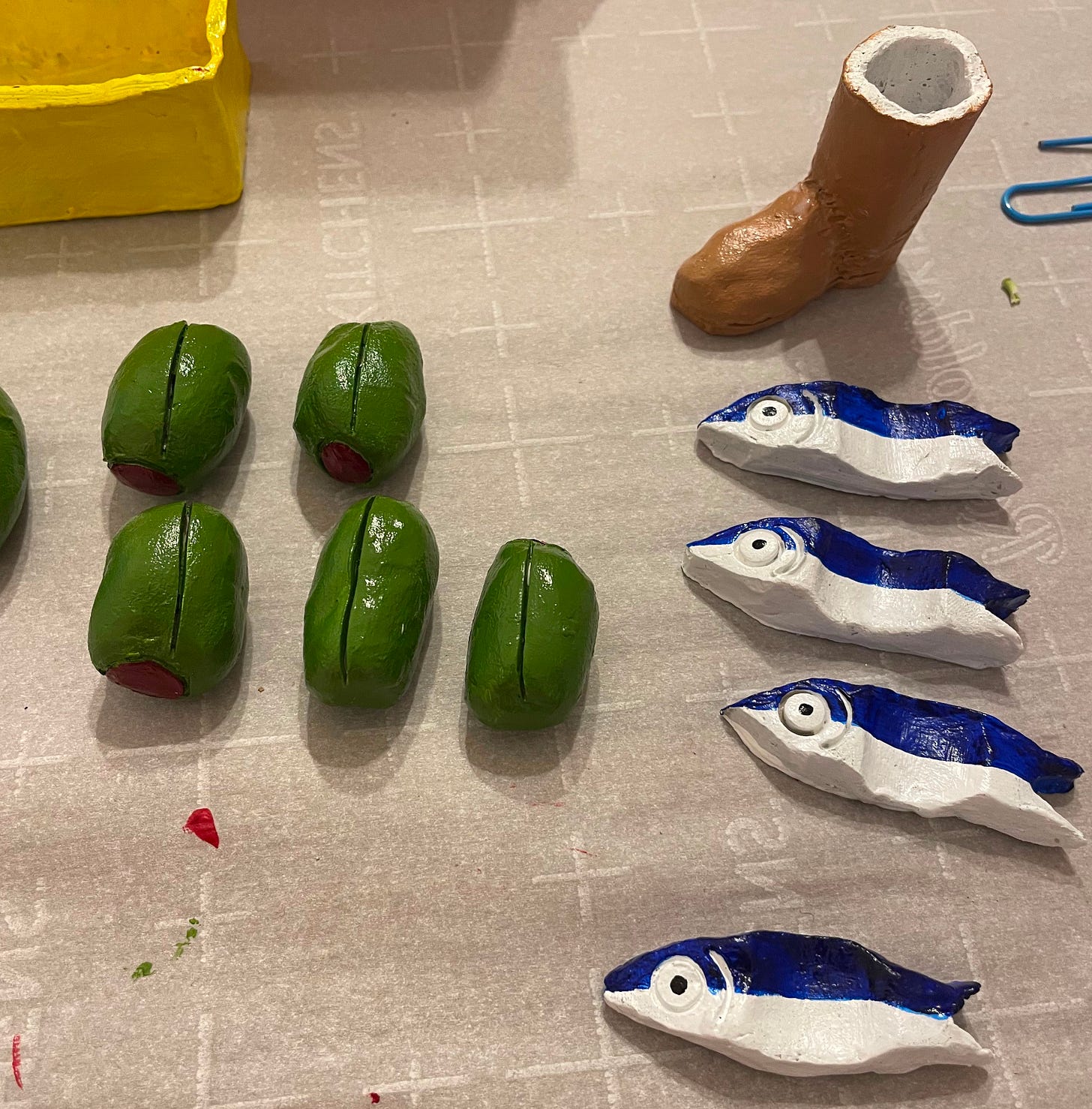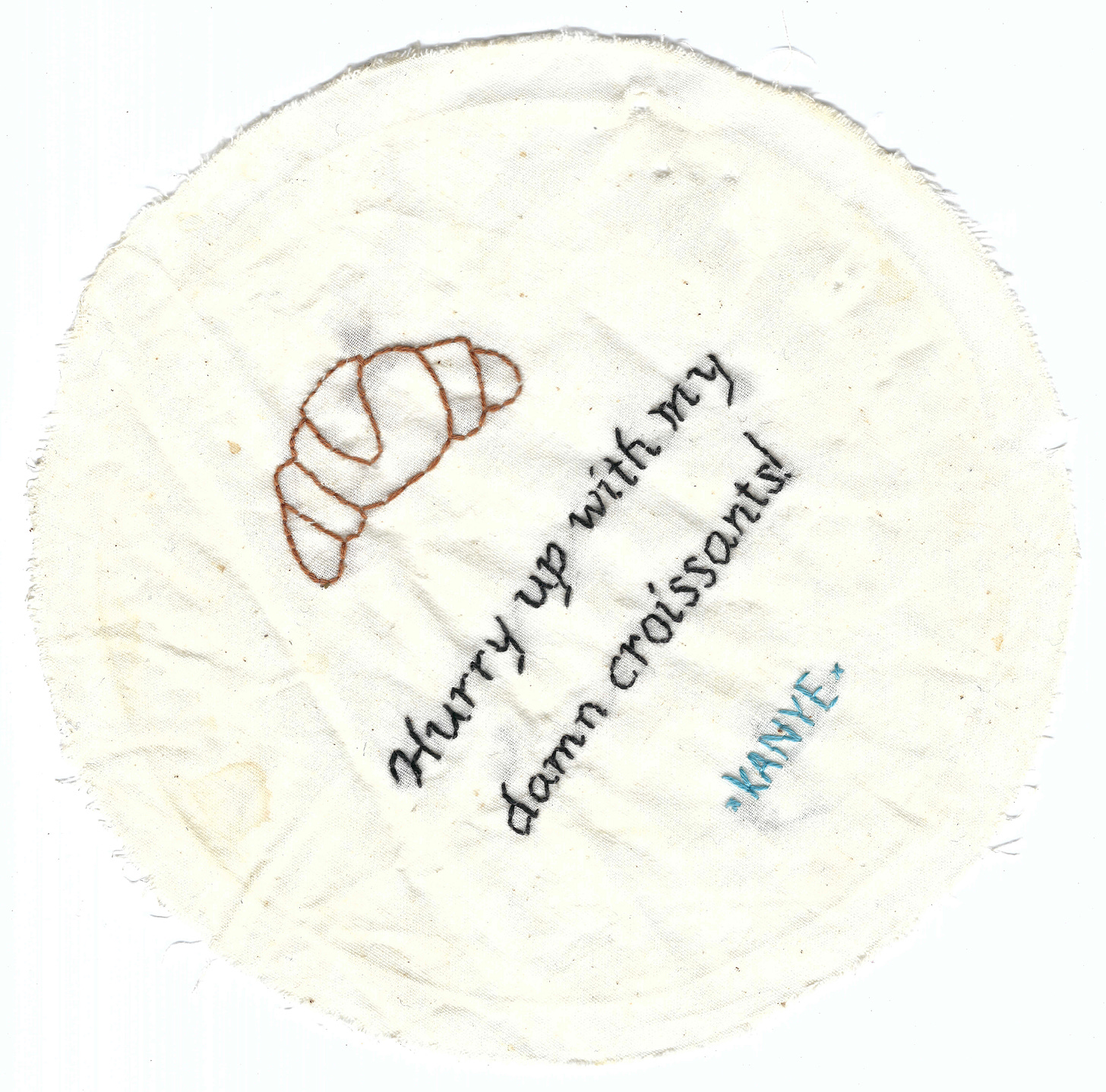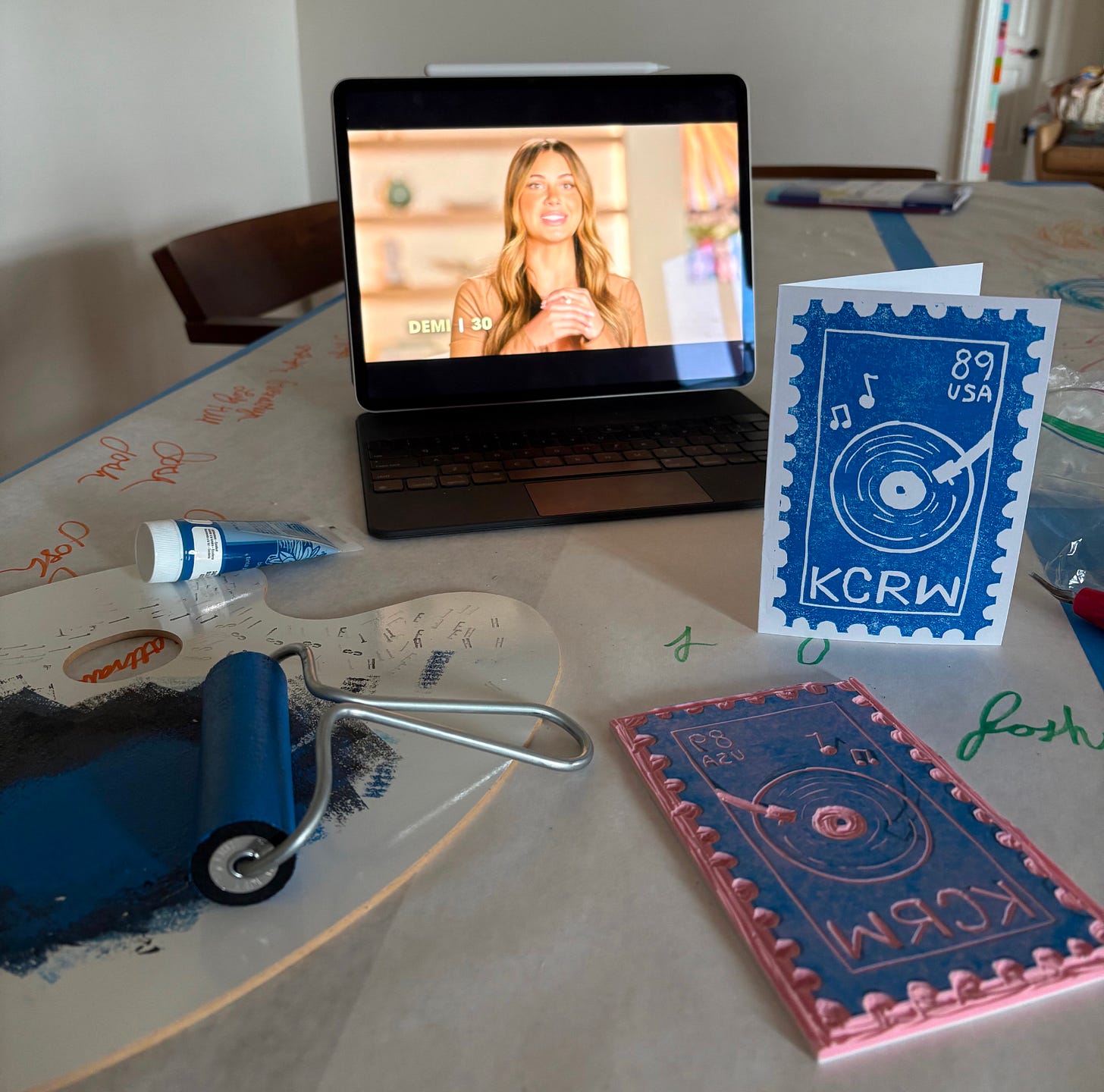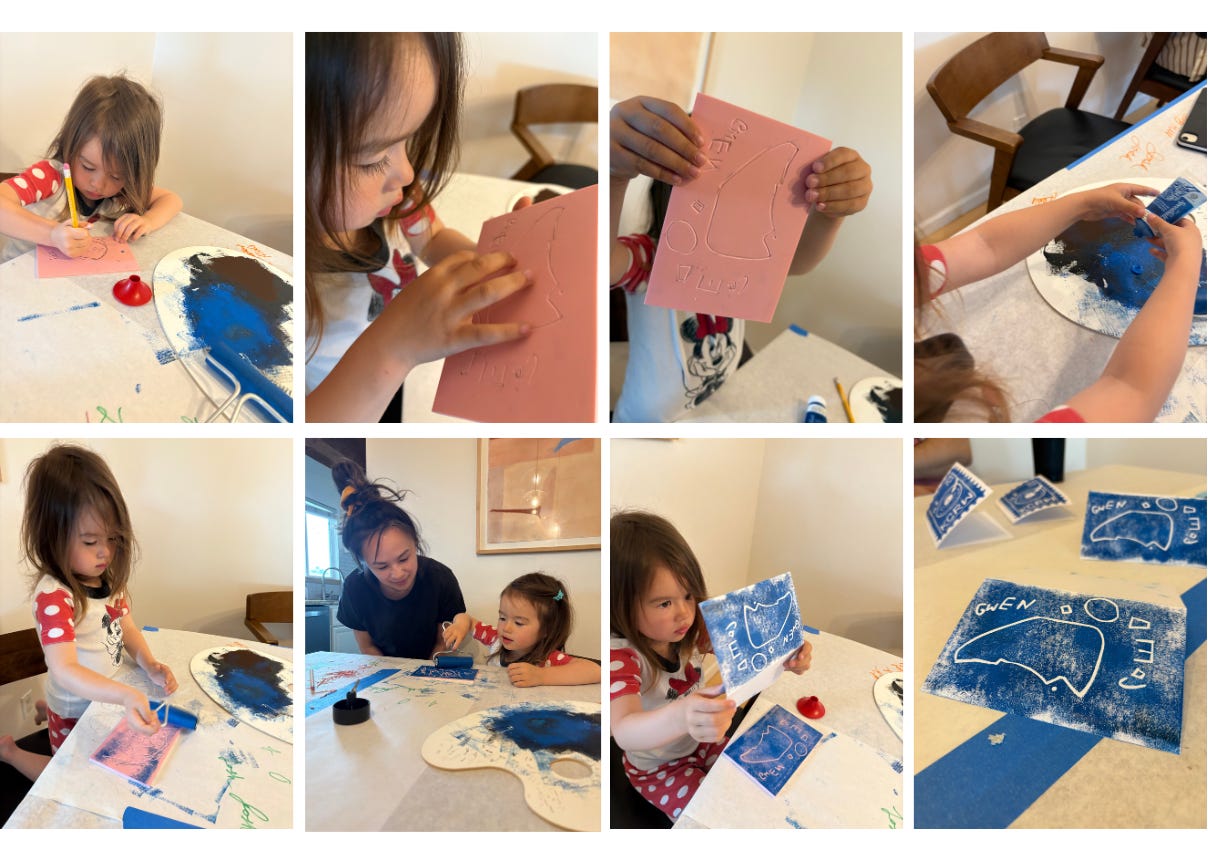
Hey guys, guess who caught the arts n’ craft bug this week?
There’s a growing amount of research on why hobbies are good for your mental, physical and emotional health. Leisure activities are associated with higher well-being, lower stress, and increased mood. They’re linked with lower blood pressure, total cortisol, lower levels of inflammation and reduced cardiovascular risk. Participation in creative hobbies like crafting, music, or writing lead to better sleep and fewer headaches and physical ailments. Studies show that seniors who participate in mentally stimulating hobbies like reading, board games, or dancing had a reduced risk of dementia. But at any age, hobbies can help give life meaning, as they contribute to a sense of identity and life satisfaction.
I watch in awe as the people around me become consumed with their hobbies. Josh and his woodworking. Naomi and her ceramics. My parents and their choir competitions.
I used to worry that I didn’t have a (capital “H”) Hobby. Nothing that could roll into a personality trait. I’ll pick up a hobby and then lose interest after a short while. Before having a total existential identity crisis, I convinced myself that maybe hobby hopping itself is my identity?
About a month ago, Anne Helen Petersen wrote a popular essay about “Millennial Hobby Energy”:
Millennial Hobby Energy is going from growing four dahlias to growing 500. It’s running a couch-to-5K and then suddenly you’re making plans for two marathons a year. It’s falling down a quilting rabbit hole on TikTok and waking up with $800 worth of fabric. It’s going golfing for the first time in a decade and suddenly you’re going on four guys’ trips and have a closet full of golf-specific rain gear.
Hundreds of readers flooded the comments with their own examples of Millennial Hobby Energy. If Millennial Hobby Energy is to ambitiously go big quickly, “hobby hopping” is pretty much the opposite.
What is Hobby Hopping?
Google AI calls it “shiny object syndrome.” I call “Hobby Hopping” letting your heart guide your leisure activity. And because it’s based on whimsy, these hobbies are low-key and mood based. They’re relatively inexpensive and don’t require major equipment. Supplies can fit in a box and be stored in a closet. They don’t require advanced planning or other people. And they’re something you can pick up whenever you feel like it, even if it has been six months or six years. You do these hobbies spontaneously. They don’t require mastery.
I only hobby hop.

I am particularly noncommittal to my extracurriculars. I do not like being forced to do something that’s supposed to be fun. Which is why any hobby that takes up a lot of space or has a high startup cost poses a challenge. I don’t want to feel guilty about it if I don’t touch it for years.
Hobby hopping is strictly anti-streak.
If you know you’re non-committal, let me validate you. And suggest some hobby hopping activities too.
The majority of mine are craft based because they’re cheap and I enjoy making something physically tangible.
One is block stamp printing. I got into it in the early 2010s, when I was dabbling with cross stitching, terrariums, and building pallet furniture (always hobby hopping). Pinterest was popping off and I was casually selling on Etsy before drop shipping became popularized.
After making a bunch of kitschy cards, I put my carving kit back in the box. Only to return to it once when I made a stamp of the Mendocino house where Josh and I got married during the pandemic.
So when Secret Lives of Mormon Wives was back on Hulu, my inner suburban housewife said it’s time to craft. Plus, I needed to make a thank you card for someone and it had been several weeks since I should have sent it. (I wasn’t in the right mood to make a card then!) My trusty carving tool that I bought years ago was good to go. Even the block paint was still moist. If you’re just getting started, I recommend this carving tool ($15), these 4x6” carving blocks ($14 for 5 pack), this paint ($20 for 4 tubes), and any rubber roller (roughly $5-12).
My motivation to block stamp extended when Gwen took an interest in it. She drew the stamp pattern, I carved it by tracing her lines, she rolled on the paint, and pressed the card. Her pre-school teacher says Gwen has a strong interested in art, so we’ll see how long this lasts. Maybe she’s a committed artist, unlike her mother. But hey, we’re bonding — the social benefit of hobbies.
So what’s not optimal for hobby hopping?
An activity where other people depend on your participation (like joining a soccer league, book club, D&D)
An activity where it depends on you (like growing tomatoes, fishkeeping)
Anything that depends on having large or expensive machinery or equipment (like sewing, wood working, beer making)
What’s optimal for hobby hopping?
Low start up cost or uses things you already own
Supplies can fit in a large shoebox
Supplies don’t expire quickly
Not weather restrictive
Anything you can learn on Youtube
Examples
Photography
Line dancing
Air dry clay sculpting
Drawing or coloring
Embroidery
Baking
Zine creation
Collage art
Creative writing
The only rule
Be guided by your whim. When it’s no longer fun, stop immediately. Put everything back in the box. Chances are the mood will strike again. And if it doesn’t, don’t worry about it. So what, you spent $30 on an afternoon of creativity. You didn’t fail. This is not about persevering. It’s about leisure!!!
And maybe, if you want to throw in that Millennial Hobby Energy, you could turn that hobby hop into a party with friends. Host an Analog Night. I’ll admit, it is fun to be a little extra (the millennial curse). And think of the health benefits. It practically cancels out the wine and cheese.







